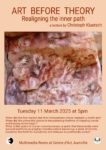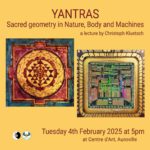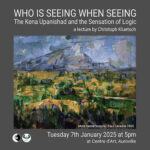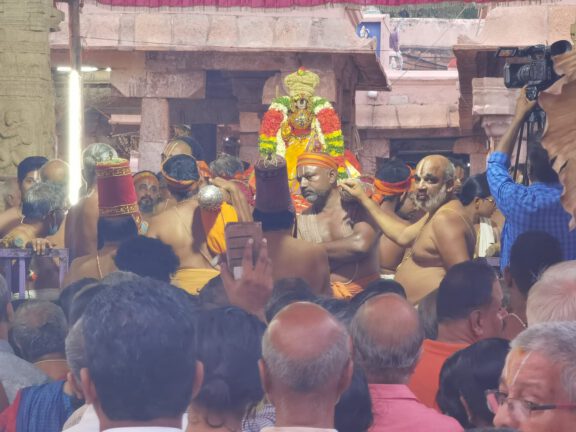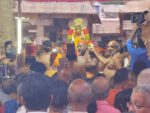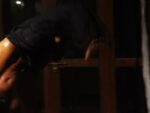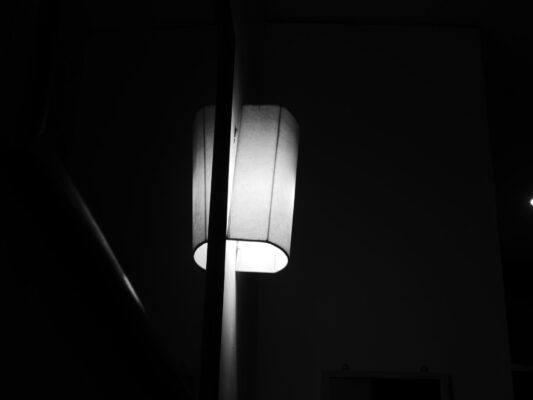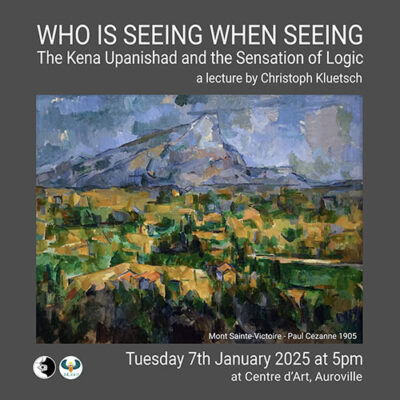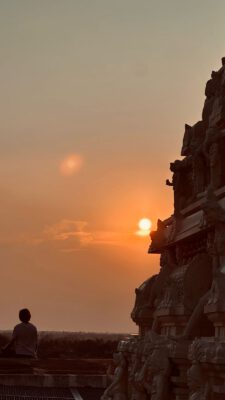When I fell into the abyss of skepticism as a teenager after my first love for Plato (especially the Phaedo dialogue) and the great Greek poets like Sophocles etc.. the path was rocky from Descartes meditation, to Hume, Kant, Husserl. I lost sight of the soul, followed the ideology of pure empirical sciences. Only what can be perceived with the 5 senses was considered as ‚material‘ for philosophy, and embedded in this was the doubt whether these senses could be trusted. Whether not everything is only an illusion. The arc from Plato to David Hume could hardly be greater.
Images
The idea that the world shows itself only in perceptual images led me to aesthetics, but never have I seen this as clearly as I did the other day when I was rummaging through Aurobindo’s text on the Upanishads. I recall Willard Van Orman Quine’s legendary and absurd example of unseparated hare parts: when a hare passes behind a tree and so in my perception two hare parts present themselves – a front hare part and a back hare part – and yet I seem to have a certainty that it is a hare. So we could learn something here about the principles of our perception and language. Hume already pointed this out by saying that we cannot have a certainty that the sun will rise again tomorrow (his point was to question causality). Here is Aurobindo’s statement on this kind of philosophy:
„The sun rises up in the morning, mounts into the cusp of the blue Heavens and descends at evening trailing behind it clouds of glory as it disappears. Who could doubt this irrefragable, overwhelmingly evidenced fact? Every day, through myriads of years, the eyes of millions of men all over the world have borne concurrent and unvarying testimony to the truth of these splendid voyagings. Than such universal ocular testimony, what evidence can be more conclusive? Yet it all turns out to be an image created by Nescience in the field of vision. Science comes & undeterred by prison & the stake tells us that the sun never voyages through our heavens, is indeed millions of miles from our heavens, and it is we who move around the Sun, not the Sun around us. Nay those heavens themselves, the blue firmament into which poetry and religion have read so much beauty and wonder, is itself only an image, in which Nescience represents our atmosphere to us in the field of vision. The light too which streams upon us from our Sun and seems to us to fill Space turns out to be no more than an image. Science now freely permitted to multiply her amazing paradoxes, forces us at last to believe that it is only motion of matter affecting us at a certain pitch of vibration with that particular impression on the brain. And so she goes on resolving all things into mere images of the great cosmic ether which alone is. Of such unsubstantialities is this marvellous fabric of visible things created! Nay, it would even appear that the more unsubstantial a thing seems, the nearer it is to ultimate reality. This, which Science proves, says the Vedantist, is precisely what is meant by Maya.“ (Aurobindo CVSA 18, p.379)
It is not only Aurobindo’s poetic power that fascinates me here, the way he evokes and tosses around this image of the rising sun, weaving in the various positions and then repositioning the problem itself. It is the power of being guided by one’s own intuition and insight, by experience in the richest sense.
Lesson learned:
If we are to analyze the world as a mere phenomenon, may the initial images please be rich and powerful and not silly reduced like severed rabbit parts.
Then, if we follow the method of the natural sciences and the rational mind, please follow it to the end, where we see that it is actually this science that produces the very images it doubts.
And finally the reversal of the problem, in a kind of dialectical turn. The world is undeniably real, only it is not as science describes it. This is shown by science itself.
Every experimental setup is a simulation, a construction. Every theory is a description of world whose hypothesis is subjected to constant testing. In the Vedas we learn about the core of the world as we experience it: It is pure consciousness. My consciousness knows nothing but consciousness. It is an insane assumption that anything that contains my consciousness should be its opposite. It is not that our consciousness contains an image of a completely differently formed reality. But the world consists of consciousness, in the interaction of consciousness with other consciousness, in the differentiation of the one in its multiplicity perceptions and pictures arise. They are connected by vibration. The Kena Upanishads describe this, the basic principle is OM in the Mandukya Upanishad, everything is connected by a rhizome on a level of immanence, as Deleuze describes it in his last essay.
Maya, the question of reality, reveals a paradox; it is the question itself that generates the problem. The mental images that serve as the basis for rational analysis are maya – illusion. Our consciousness, on the other hand, is real, the only reality. This is the core of the problem of dualism dvaita-advaita
Om shanti, shanti, shanti

